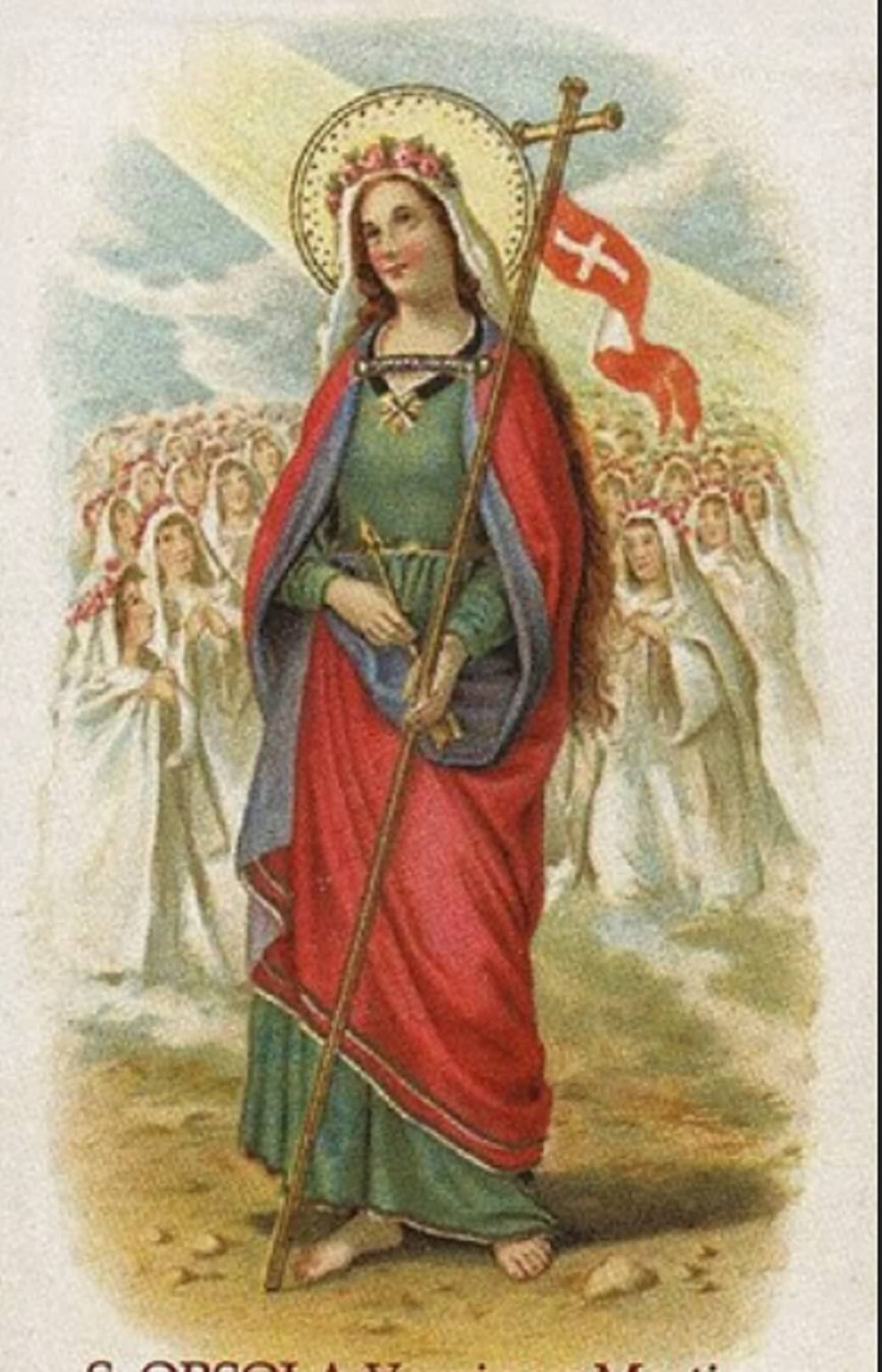Saint Ursula (Latin for ‘little female bear’, German: Heilige Ursula) is a legendary Romano-British Christian saint who died on 21 October 383. Her feast day in the pre-1970 General Roman Calendar is 21 October. There is little information about her and the anonymous group of holy virgins who accompanied and, on an uncertain date, were killed along with her at Cologne. They remain in the Roman Martyrology, although their commemoration does not appear in the simplified Calendarium Romanum Generale (General Roman Calendar) of the 1970 Missale Romanum.
The earliest evidence of a cult of martyred virgins at Cologne is an inscription from c. 400 in the Church of St. Ursula, located on Ursulaplatz in Cologne which states that the ancient basilica had been restored on the site where some holy virgins were killed. The earliest source to name one of these virgins Ursula is from the 10th century.

Her legendary status comes from a medieval story[6] in which she was a princess who, at the request of her father King Dionotus of Dumnonia in south-west Britain, set sail along with 11,000 virginal handmaidens to join her future husband, the pagan governor Conan Meriadoc of Armorica. After a miraculous storm brought them over the sea in a single day to a Gaulish port, Ursula declared that before her marriage she would undertake a pan-European pilgrimage. She headed for Rome with her followers and persuaded the Pope, Cyriacus (unknown in the pontifical records, though from late 384 AD there was a Pope Siricius), and Sulpicius, bishop of Ravenna, to join them. After setting out for Cologne, which was being besieged by Huns, all the virgins were beheaded in a massacre. The Huns’ leader fatally shot Ursula with an arrow in about 383 AD (the date varies).


A legend resembling Ursula’s appeared in the first half of the tenth century; it does not mention the name Ursula, but rather gives the leader of the martyred group as Pinnosa or Vinnosa. Pinnosa’s relics were transferred about 947 from Cologne to Essen, and from this point forward Ursula’s role was emphasised. In 970, for example, the first Passio Ursulae was written, naming Ursula rather than Pinnosa as the group’s leader (although Pinnosa is mentioned as one of the group’s members). This change might also be due in part to the discovery at this time of an epitaph speaking of Ursula, the “innocent virgin”.

The Basilica of St. Ursula in Cologne holds the alleged relics of Ursula and her 11,000 companions. It contains what has been described as a “veritable tsunami of ribs, shoulder blades, and femurs … arranged in zigzags and swirls and even in the shapes of Latin words”. The Goldene Kammer (Golden Chamber), a 17th-century chapel attached to the Basilica of St. Ursula, contains sculptures of their heads and torsos, “some of the heads encased in silver, others covered with stuff of gold and caps of cloth of gold and velvet; loose bones thickly texture the upper walls”. The peculiarities of the relics themselves have thrown doubt upon the historicity of Ursula and her 11,000 maidens. When skeletons of little children ranging in age from two months to seven years were found buried with one of the sacred virgins in 1183, Saint Hermann Joseph, a Praemonstratensian canon at Steinfeld, explained that they were distant relatives of the eleven thousand. A surgeon of eminence was once banished from Cologne for suggesting that, among the collection of bones which are said to pertain to the heads, there were several belonging to full-grown mastiffs. The relics may have come from a forgotten burial ground.



Nothing reliable is known about the girls said to have been martyred at the spot. A commemoration of Saint Ursula and her companions in the Mass of Saint Hilarion, formerly in the General Roman Calendar on 21 October, was removed in 1969, because “their Passio is entirely fabulous: nothing, not even their names, is known about the virgin saints who were killed at Cologne at some uncertain time”. However, they are still mentioned in the Roman Martyrology, the official but professedly incomplete list of saints recognised by the Catholic Church, which speaks of them as follows: “At Cologne in Germany, commemoration of virgin saints who ended their life in martyrdom for Christ in the place where afterwards the city’s basilica was built, dedicated in honour of the innocent young girl Ursula who is looked on as their leader”.

